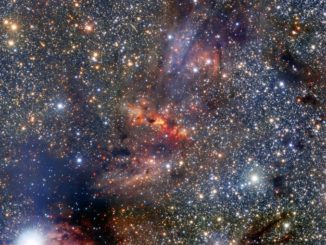
ESO’s infrared VISTA telescope

Picture This

Picture This

Picture This

News
Remains of ancient globular clusters found at the heart of the Milky Way
Ancient variable stars, of a type known as RR Lyrae, have been discovered in the centre of the Milky Way for the first time. RR Lyrae stars typically reside in ancient stellar populations over 10 billion years old, such as globular clusters. These stars may even be the remains of the most massive and oldest surviving star cluster of the entire Milky Way.
